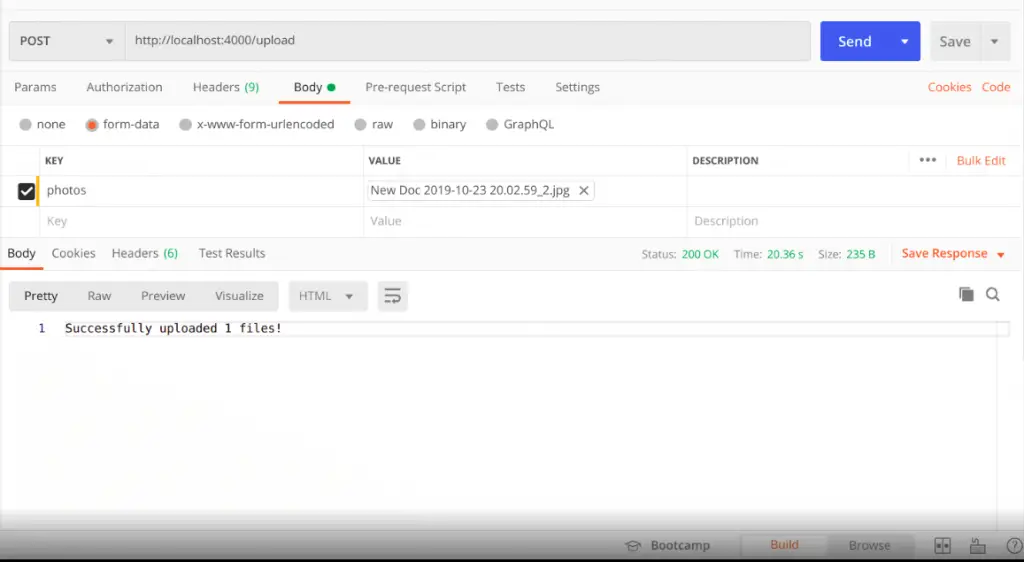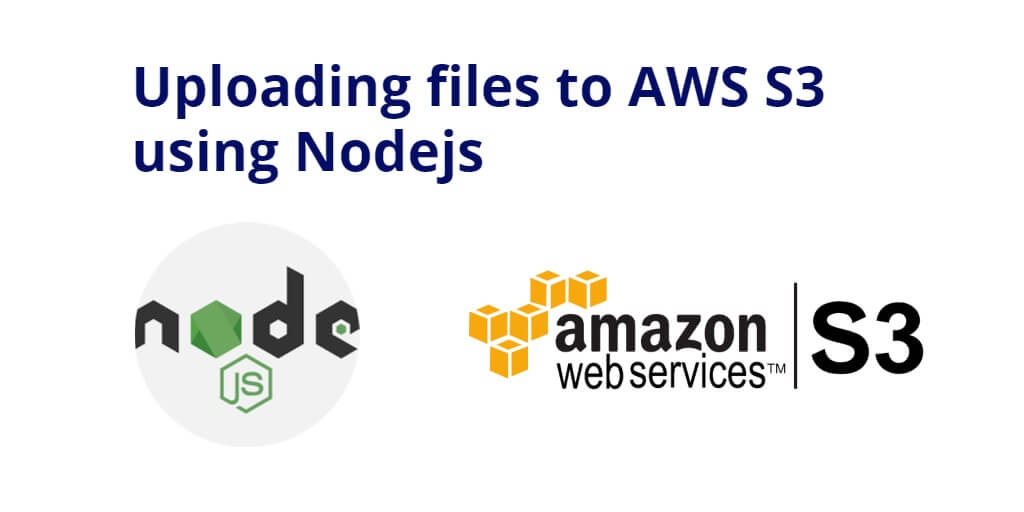In this tutorial, you will learn how to upload a file to an amazon s3 bucket using node js express with aws-s3, multer package.
How to Upload Files to Amazon s3 bucket using Node JS + Express?
Steps to upload single or multiple files to aws s3 bucket:
Step 1 – Create Node Express js App
Run the following command on cmd to create node js app:
mkdir my-app
cd my-app
npm init -y
Step 2 – Install express, aws-s3, Multer dependencies
Run the following command on cmd to install express, aws-s3 and multer dependencies:
npm install express multer aws-sdk body-parser --save
Step 3 – Create Server.js File
Create server.js file in your application root directory, and follow the below steps:
- Import Installed Packages
- Configure AWS-S3 Package with Multer
- Create Uploading Single File to AWS S3 with Node.js REST API Route
- Create Uploading Single File to AWS S3 with Node.js REST API Route
Import Installed Packages
Import above installed dependencies package in server.js file:
var aws = require('aws-sdk')
var express = require('express')
var multer = require('multer')
var multerS3 = require('multer-s3')
Configure AWS-S3 Package with Multer
Then configure aws-s3 package with multer as shown below:
var s3 = new aws.S3({
accessKeyId: " ",
secretAccessKey: " ",
Bucket: " "
})
var upload = multer({
storage: multerS3({
s3: s3,
bucket:””,
metadata: function (req, file, cb) {
cb(null, { fieldName: file.fieldname });
},
key: function (req, file, cb) {
cb(null, Date.now().toString())
}
})
})
Create Uploading Single File to AWS S3 with Node.js REST API Route
The following node js rest api route will be upload single file to amazon s3 bucket:
//Uploading single File to aws s3 bucket
app.post('/upload', upload.single('photos'), function (req, res, next) {
res.send({
data: req.files,
msg: 'Successfully uploaded ' + req.files + ' files!'
})
})
Create Uploading Multiple File to AWS S3 with Node.js REST API Route
The following node js rest api route will be upload multiple file to amazon s3 bucket:
//Uploading single File to aws s3 bucket
app.post('/upload', upload.single('photos'), function (req, res, next) {
res.send({
data: req.files,
msg: 'Successfully uploaded ' + req.files + ' files!'
})
})
Step 4 – Start Node Express Js Application
Run the following command on cmd to start node express js server:
//run the below command npm start
Step 5 – Uploading Files to AWS S3 Bucket with Node.js REST API
To upload single or multiple files to aws s3 bucket using node js rest API; So open postman for sending HTTP multipart/form-data requests: as shown below picture:

Conclusion
That’s it, you have learned how to upload files to the amazon s3 bucket using node js + rest api+ express with the express, aws-s3, multer package.
